Telling the Singapore STory in immersive new ways
Sign up now: Get ST's newsletters delivered to your inbox
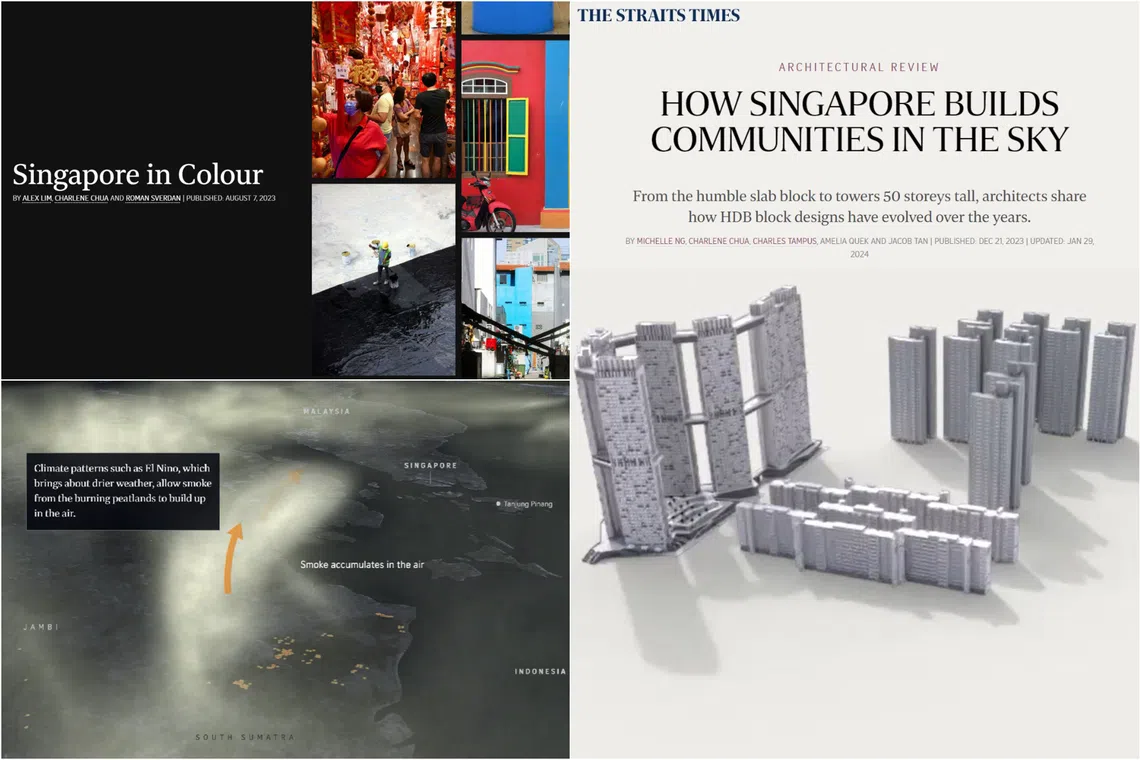
As Singapore’s newspaper of record, The Straits Times is using tech-powered storytelling to boost the reader experience.
PHOTOS: SPH MEDIA
Follow topic:
SINGAPORE – The Straits Times is setting a course for dynamic digital storytelling with a focus on local content as it celebrates its 179th year on July 15.
The rise and rise of digital platforms delivering news to mobile devices in the last few years has dealt a body blow to physical newspapers worldwide. A majority have shuttered their printing presses and moved online to cut losses incurred from spiralling costs, as well as attrition in advertising revenue and newspaper circulation.
Its strategic steer is designed to boost the reader experience beyond the limitations of the old-school printed product and explore more innovative ways to showcase its stories.
Storied past
ST, which is the most read newspaper in Singapore, is also the oldest in South-east Asia.
It predates some of the world’s most established English-language newspapers such as The New York Times in the United States, which was founded in 1851; the Daily Telegraph in the United Kingdom in 1855; and the South China Morning Post in Hong Kong in 1903.
ST started on July 15, 1845, as an eight-page weekly newspaper called The Straits Times And Journal Of Commerce, and was targeted at a tiny group of Europeans in the former British Straits Settlements colony, eager to catch the latest news about commodity prices and cargo-laden ships docked at the port city.
Over more than a century, ST has become inextricably linked with the Singapore Story, as Senior Minister Lee Hsien Loong pointed out in 2015 when the paper celebrated 170 years.
“The Straits Times has been the newspaper of record for Singapore for 170 years,” said SM Lee in a speech at the ArtScience Museum, where ST held an exhibition called Singapore STories: Then, Now, Tomorrow.
“If you want to know what happened in Singapore, or in the region around us, (ST) is an indispensable place to start because it has reported news reliably and objectively over the years,” he added.
“It has done so through Singaporean eyes, helping Singaporeans to make sense of the world, and our place in it. The Straits Times story is one important strand of the Singapore Story.”
Since Dec 1, 2021, ST has been part of SPH Media Trust (SMT), a new company limited by guarantee.
ST and its sister titles in English, Malay, Tamil and Chinese – previously owned by Singapore Press Holdings (SPH) – come under a new entity called SPH Media, a part of SMT. SPH Media publishes more than 15 news brands, including student publications such as English weekly The Little Red Dot and Chinese bi-weekly Thumbs Up.
ST is the flagship English daily newspaper published by SPH Media, the island’s largest omnichannel network with 40 media brands reaching a wide range of demographics across Asia. In Singapore, SPH Media has a combined online and offline weekly reach of 3.1 million residents.
The flagship paper is ramping up its digital offerings to build from its position of strength.
From strength to strength
A 2021 inaugural study conducted by global research company GfK, which was commissioned by SPH, found that seven in 10 Singaporeans consume one or more types of content across SPH platforms – print, digital, radio or magazines.
ST – in print, e-paper and online formats – was the most widely accessed title, read by 44 per cent of people aged 15 and above in Singapore.
More than three in four of these readers – 76 per cent – read ST online, making it SPH’s most visited digital news platform, while 33 per cent read a physical newspaper copy, and 10 per cent read the e-paper.
The survey also revealed that ST has a higher proportion of millennial and Generation X readers.
More than a third – 35 per cent – of all SPH newspaper readers are subscribers. ST and The Business Times enjoy the highest subscription rates – hardcopy or e-paper – of 45 per cent each among their readership base.
Anticipating hard knocks is one way newspapers stay ahead of the curve.
In a January 2024 report by the Reuters Institute for the Study of Journalism, which is based in the University of Oxford in Britain, newspapers worldwide have to tackle short-term disruptions – such as generative artificial intelligence (AI) content and avatar news presenters – with some degree of urgency.
The institute surveyed 314 news leaders from 56 countries and territories around the world.
Titled Journalism, Media, And Technology Trends And Predictions 2024, the report cited mainstream media challenges coming from the proliferation of AI news sites online; critical elections in more than 40 democracies; and the prolonged wars in Europe and the Middle East.
A major concern for newsrooms worldwide is the pervasiveness of AI.
The report said that while the tech can be deployed for back-end news automation to save time and cut costs, most publishers are not ready to use AI for content creation, which is considered the biggest risk to a publisher’s reputation.
The report highlighted newsroom pivots that can help counter these existential threats, such as better explanation of complex stories, more constructive approaches to storytelling and inspirational human interest stories.
For many legacy newsrooms such as ST, the digital revolution has already started with a shift away from text-based news reporting to a multimedia format that includes video, interactive graphics and data visualisation.
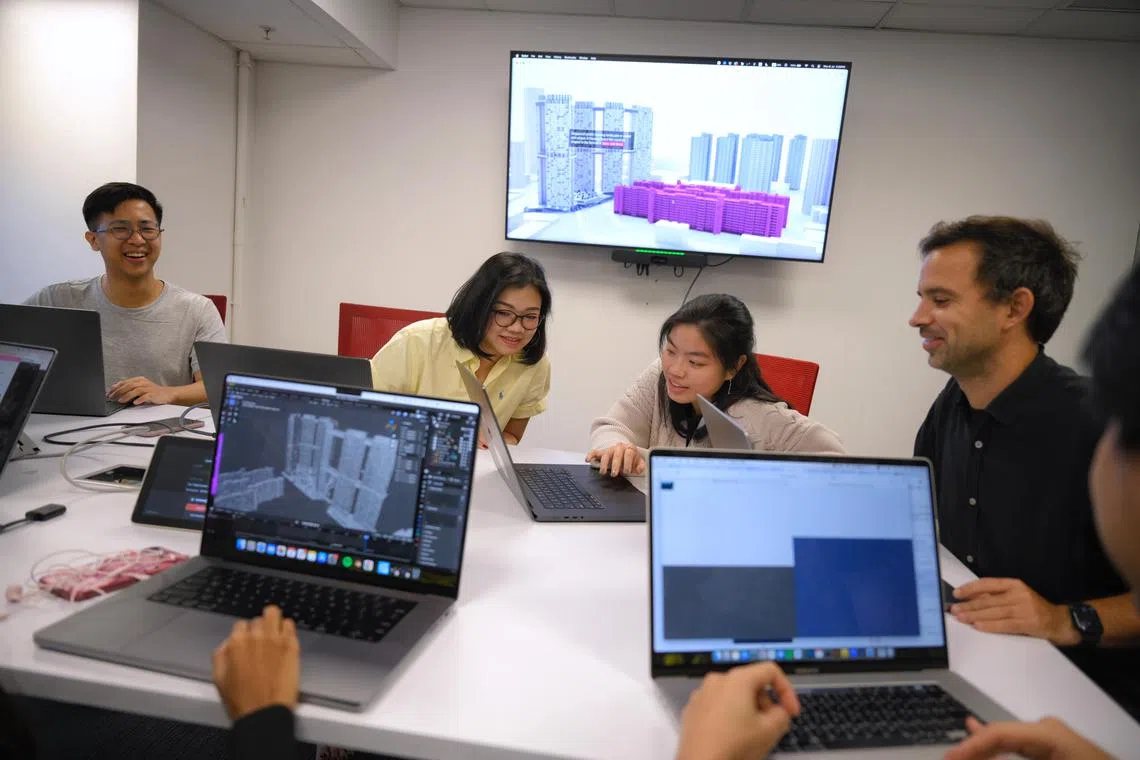
The Straits Times’ interactive graphics team discussing projects at the ST office.
ST PHOTO: MARK CHEONG
Refining the reader experience
ST bagged several awards for excellence in visual storytelling in 2024.
In April, ST’s visual story How Singapore Builds Communities In The Sky ( str.sg/JXMGj
The interactive project centred on how the design of Housing Board blocks has evolved over the years.
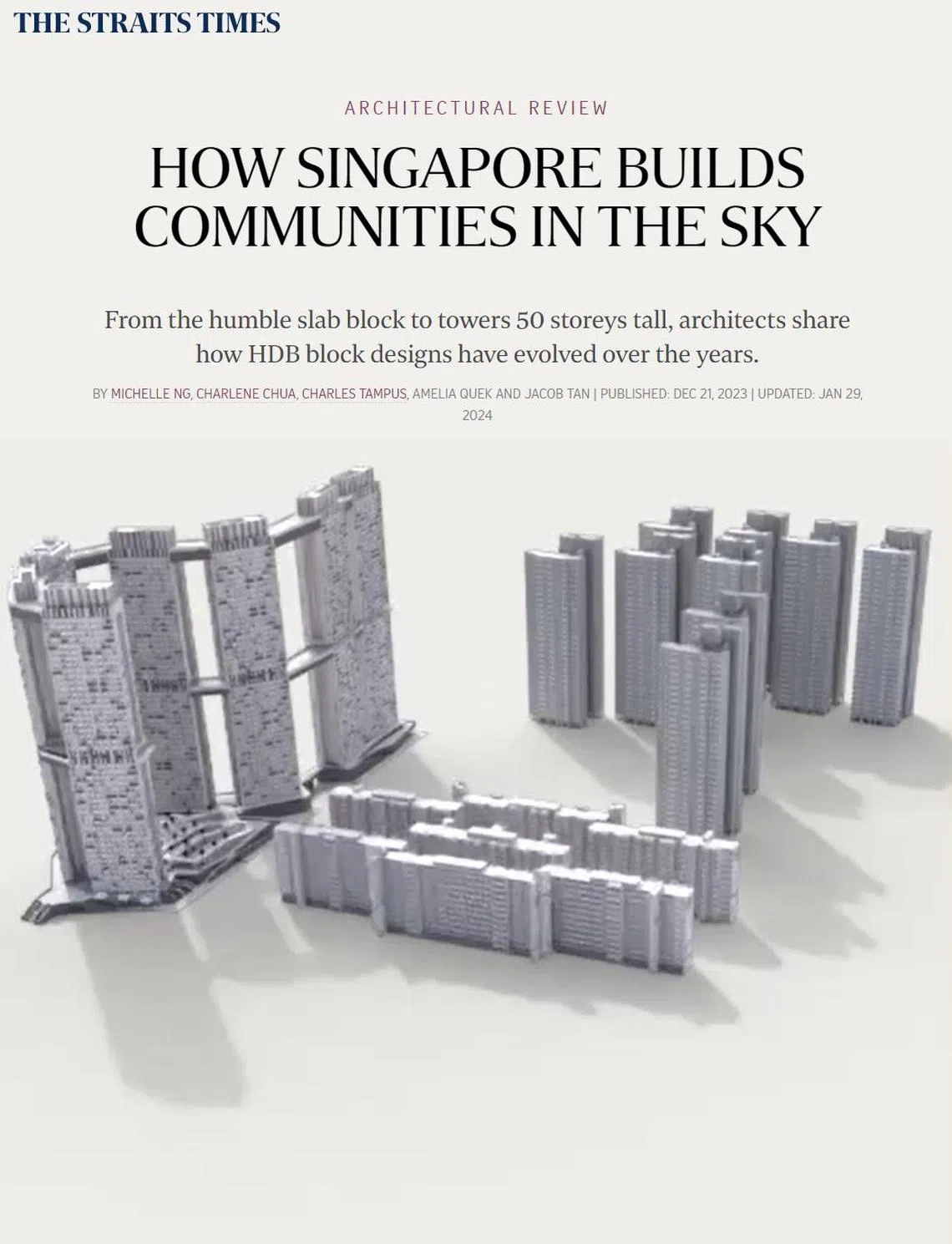
ST’s visual story How Singapore Builds Communities In The Sky centred on how the design of Housing Board blocks has evolved over the years.
PHOTO: SPH MEDIA
ST won four golds and one silver at the awards, organised by the World Association of News Publishers (Wan-Ifra) to recognise publishers that have adopted digital media and mobile strategies to respond to how people consume news and information.
A month later, ST snagged top awards at the annual Best of News Design Creative Competition, organised by the US-based Society for News Design.
ST clinched a total of 60 awards, 51 of which were for its digital storytelling efforts such as Singapore in Colour ( str.sg/sg-colour

The Straits Times’ digital project Singapore in Colour shows readers the vibrancy of their local neighbourhoods.
PHOTO: SPH MEDIA
For its digital projects, ST won two golds, five silvers, 13 bronzes and 31 awards of excellence. For its print works, it received nine awards of excellence.
ST’s interactive graphics editor Rodolfo Pazos says there has been a growing demand from ST readers for visual storytelling since 2015.
This was most pronounced in the last few years after the Covid-19 pandemic, when there was an uptrend in data visualisation on news platforms.
Mr Pazos says that his team has responded to the demand by adding “memorability” to its projects, an intangible element that helps a project resonate and remain with its reader long after he or she has moved on to other page views.
“In the face of AI, it’s even more important for our projects to feel handcrafted and curated with a human touch, so we spend a lot of time making sure the story and visuals align to present a cohesive narrative,” says the 42-year-old, who graduated with a bachelor’s in fine arts from the University of Bologna, Italy, in 2008.
Prior to joining ST in 2015, he worked at The Sydney Morning Herald in 2010 and Mediacorp in 2013.
For ST to be at the top of its game, the paper can take a leaf out of the playbook of those who are considered the gold standard in news.
“Newsrooms such as The New York Times, The Washington Post and Reuters have a long history of excelling in visual storytelling and are world-class,” Mr Pazos observes.
“For us, we are still learning and growing, trying to find our own special way of bringing visual joy to our readers. We are always looking for projects that we can do differently.”

One of The Straits Times’ “moonshots” was a digital project published on Oct 7, 2023, about the haze in Singapore. It won four bronze prizes and one Award of Excellence at the Society for News Design awards in May 2024.
PHOTO: SPH MEDIA
He says that his team of six data visualisation developers and digital designers has been selective about the projects it takes on.
“We call the major projects our moonshots,” he says.

This ST digital project published on Oct 7, 2023, featured a haze map based on data modelling.
PHOTO: SPH MEDIA
“There are about six to eight of these we can commit to each year. The chosen projects must have the potential for us to push ourselves towards visual excellence, innovation and journalistic integrity. Readers can expect more engaging stories in the coming months.”
Cycle of experimentation
ST editor Jaime Ho says that the imperative for constant evolution and innovation in journalism has always driven the best newsrooms as they seek to bring journalism to their communities.
It is no different for ST as the paper is fortunate to have a world-class team that experiments and pushes the boundaries in creative storytelling techniques.
Mr Ho says this virtuous circle, which allows for experimentation and builds more creative teams, will attract even more talent to the newsroom as technology evolves.
“This is the first pillar of how our stories already stand out. It is how we tell our stories,” he says, adding that the other pillar is to build on what these stories are.
“Here, we will tell stories that resonate even more with our audiences, those that inform through immersive and interactive digital storytelling, build emotional connections within communities, and quietly strengthen the relationship that ST has with its audiences and society at large.”
Mr Sonny Chionh, who has been reading ST since he was 16, finds that ST’s interactive platform offers an entirely different experience from print by animating words and static images.
“The interactive projects combine different media techniques and approaches to tell a story in a way that expresses the mood almost seamlessly in a concise manner,” says Mr Chionh, 54, an executive director at architecture firm RSP and a registered architect specialising in commercial, hospitality and institutional typologies.
He says that the digital project Singapore in Colour is one example of robust visual storytelling, where the built environment was expressed through palettes.
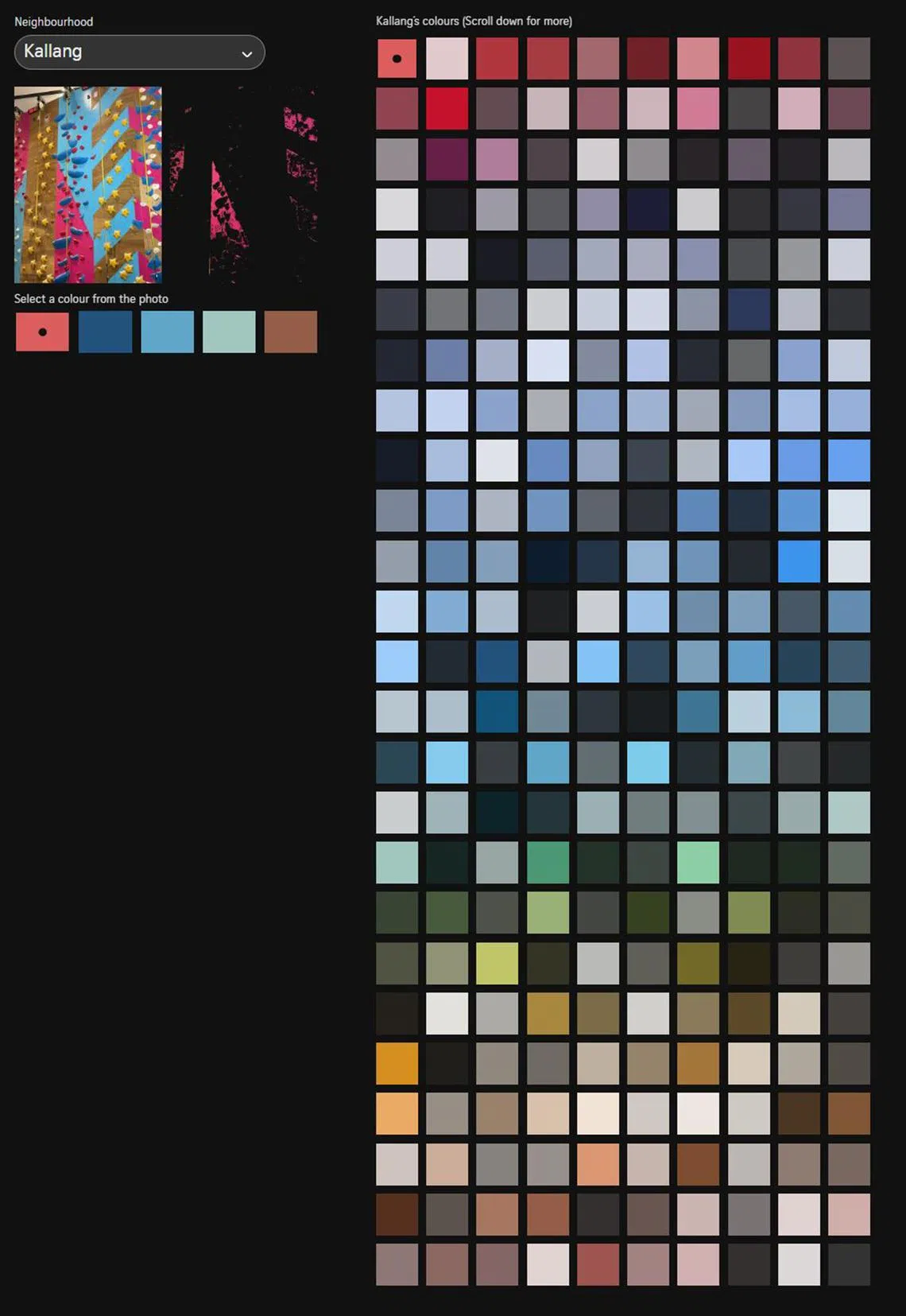
The Straits Times’ digital project Singapore in Colour expresses the city-state’s built environment through palettes.
PHOTO: SPH MEDIA
“As the saying goes, ‘a picture is worth a thousand words’, and with interactive graphics and data visualisation, it can tell even more,” he adds.
He says that for the lay reader, there may be many aspects of a piece of news that are difficult to understand. For example, an industrial innovation in the pharmaceutical or engineering sector can be made more accessible through interactive graphics.
“Another recent example is how ST was able to capture former PM Lee’s years of work and achievements with such concision and clarity. A long-form written feature could never express the content in the same, touching way.”
Mobile news design
According to veteran newspaper and magazine designer Mario Garcia, digital storytelling gets to the heart of the craft, forcing journalists to change traditional formats of news writing.
He says that people now live in a mobile phone culture, so the new art of storytelling requires that the media adapt to continue engaging the reader.
“When we write for print, we do not interrupt the text with visual assets. But with digital storytelling, we tell stories in the same way we would communicate via a WhatsApp chat,” says Dr Garcia, who is also an adjunct professor at the Columbia University Graduate School of Journalism in New York.
The founder of Garcia Media, he is working on his 16th book about the job of the design consultant.
“We read stories on mobile devices differently from how we read a story published for print. When a story is presented in a linear manner, the text and visual images appear in perfect flow.”
Digital design, mobile-first strategies and innovative storytelling techniques are not merely aesthetic choices, Dr Garcia says. They are essential tools for enhancing the accessibility, engagement and retention of a newspaper’s audience.
“We live in an era where information overload is a constant challenge,” says the 77-year-old, who has redesigned 764 newspapers in 122 countries, including Singapore, since 1969. He last visited the city-state in June 2023 for a series of lectures in SPH News Centre on digital news design.
“Well-designed platforms and user interfaces can guide readers through complex narratives, making the content more digestible and impactful,” he says.
“The New York Times, for instance, employs cutting-edge digital design to present its investigative pieces in visually compelling formats, such as interactive graphics and immersive multimedia experiences.
“This approach not only attracts a wider audience, but also deepens the reader’s understanding of topical issues.”
In the current digital landscape, is print poised to heave its last sighs?
“Not any time soon,” says Dr Garcia. “But print is no longer the protagonist in the media ecosystem. Readers will not turn to print for breaking news. The medium will become more of a ‘lean-back platform’ – suitable for leisurely reads of in-depth analyses or long-form features.”
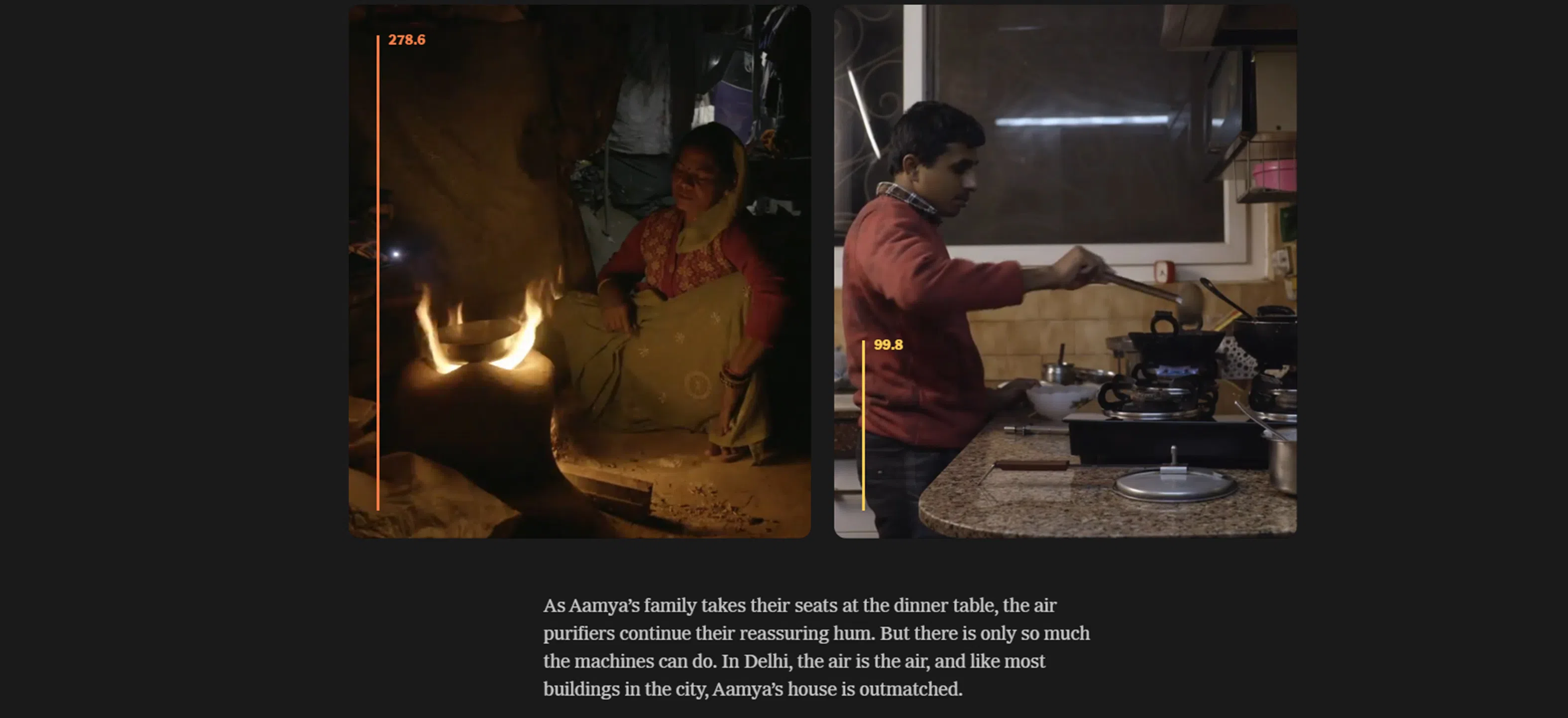
ST’s interactive graphics team is moving towards projects that meld human stories with data analysis to highlight public issues, like The New York Times’ Who Gets To Breathe Clean Air In New Delhi? (2020).
SCREENSHOT: NYTIMES
Media buyer Tinaga Angkasa says that although advertising and audience growth will continue moving to digital, currently, print still plays a role in the decision-making process with a majority of advertisers who buy advertisements through her media agency, O’lief Singapore.
“The baby boomers still enjoy consuming information by flipping through a physical copy of the newspapers or magazine,” says Ms Angkasa, who founded her public relations, marketing and social media firm in 2012.
She manages traditional and digital advertising for an international roster of clients such as Australia-based furniture brand King Living and Spanish building materials producer Cosentino.
“To this group, print provides a reliable source of information they can trust amid all the misinformation and scams going on in the digital realm. Although print will decline, I think it will reach a certain level to cater to a niche audience,” she adds.
“Quite similar to vinyl and film, there will always be a number of readers who still indulge in the tactile joy of handling newsprint.”
Getting metaverse-ready
Digital storytelling tools such as data visualisation and interactive graphics have significantly enhanced how newsrooms engage with their audience, observes Professor Roy Lee, assistant professor at the Information Systems Technology and Design Pillar in the Singapore University of Technology and Design.
He cites ST’s use of infographics during the pandemic to summarise government policies and Covid-19 rules. The visual summaries helped readers quickly grasp essential information amid a rapidly changing situation.
“These tools allow for complex information to be broken down into more digestible and visually appealing formats, making it easier for readers to understand and retain information. They also enable readers to interact with the content, fostering a more engaging and personalised experience.”
Beyond interactive graphics and infographics, Prof Lee foresees further development of the reader experience in the upcoming age of the metaverse.
He says the advent of the metaverse and advances in augmented and mixed reality (AR and MR) hold tremendous potential for the evolution of user experience and interface for readers. Immersive storytelling techniques will allow newsrooms to create more engaging and experiential content.
“Imagine a scenario where readers can virtually step into a news scene, interact with elements of a story or even participate in a simulated environment that provides a deeper understanding of complex issues,” says Prof Lee.
Besides AR and MR, AI algorithms can also be used to suggest related articles, create custom news feeds, and even generate data-driven stories automatically. This personalisation enhances reader engagement and ensures that users receive content that is most relevant to them.
“AI can facilitate the creation of more sophisticated data visualisations and interactive graphics by automating data analysis and interpretation,” Prof Lee adds. This capability allows journalists to focus more on crafting compelling narratives while AI handles the heavy-lifting of gathering data.
“As these technologies continue to develop, they will undoubtedly play a pivotal role in the future of digital storytelling, offering new ways for readers to engage with ST’s content on a more profound level.”


